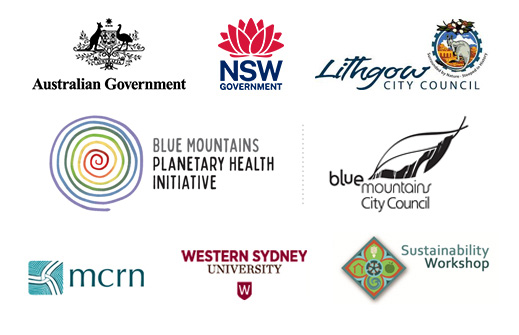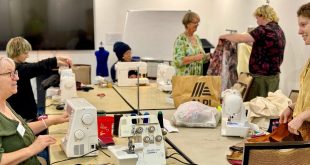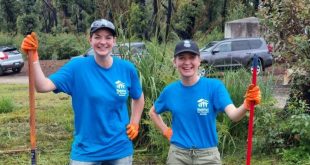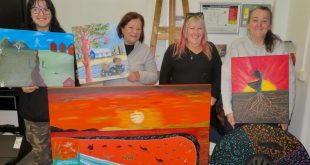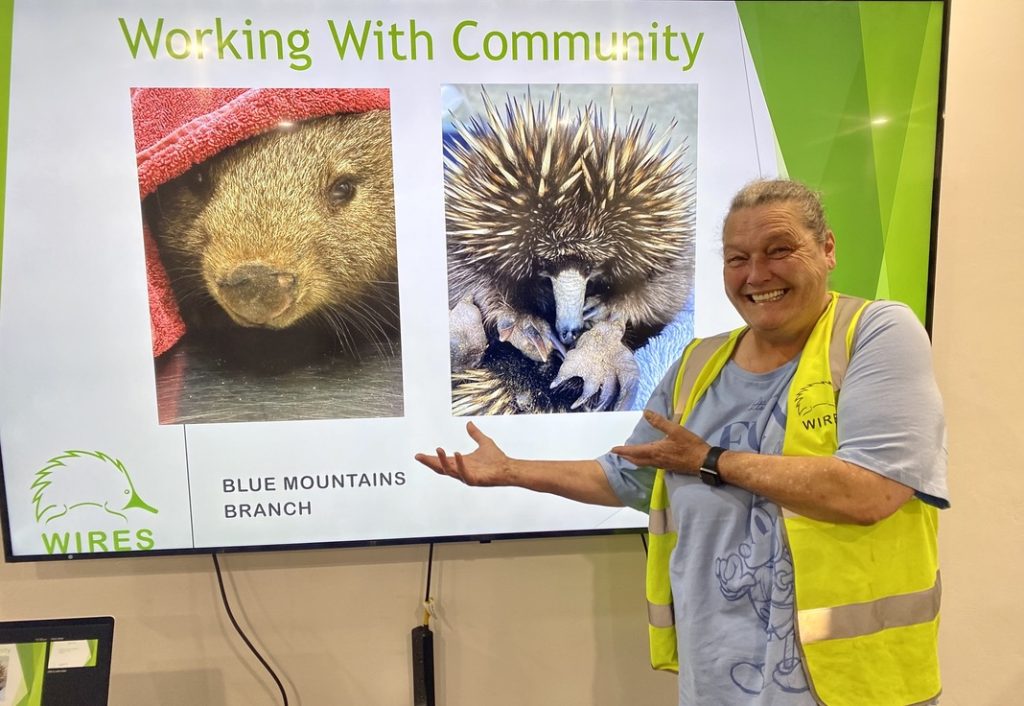
Tracy Burgess presenting the Wildlife Emergency Assistance Workshop for the Blue Mountains Planetary Health Initiative’s Disaster Risk Reduction Program (Lis Bastian)
Story by Liz Durnan
From cats to cars, barbed wire to fruit nets, native wildlife face daily dangers, many of them human-related. In a Wildlife Emergency Assistance Workshop presented by Tracy Burgess from the Blue Mountains Branch of WIRES, participants learnt about measures we can take to prevent injuries to wildlife, and what to do if we encounter an injured or sick native animal.
Key Points:
- Cats are the top cause of injury to birds and reptiles.
- There are Blue Mountains City Council-led initiatives to help cat owners keep their pets indoors, including cat enclosure subsidies. See more here: bmcc.nsw.gov.au/keeping-cats-safe-at-home-project
- It is important to provide water for wildlife as we head into an El Nino summer.
Share this article:
Seeing a native animal in distress or injured can elicit a range of responses. Some people are immobilised with panic, others heroically sprint across a busy highway eager to administer hands-on treatment. As we approach an El Nino summer the likelihood of encountering distressed native animals is increasing.
At a recent Wildlife Emergency Assistance Workshop in Katoomba, participants were urged to first calmly assess any situation. It’s crucial to consider both the best interest of the animal, as well as personal safety.
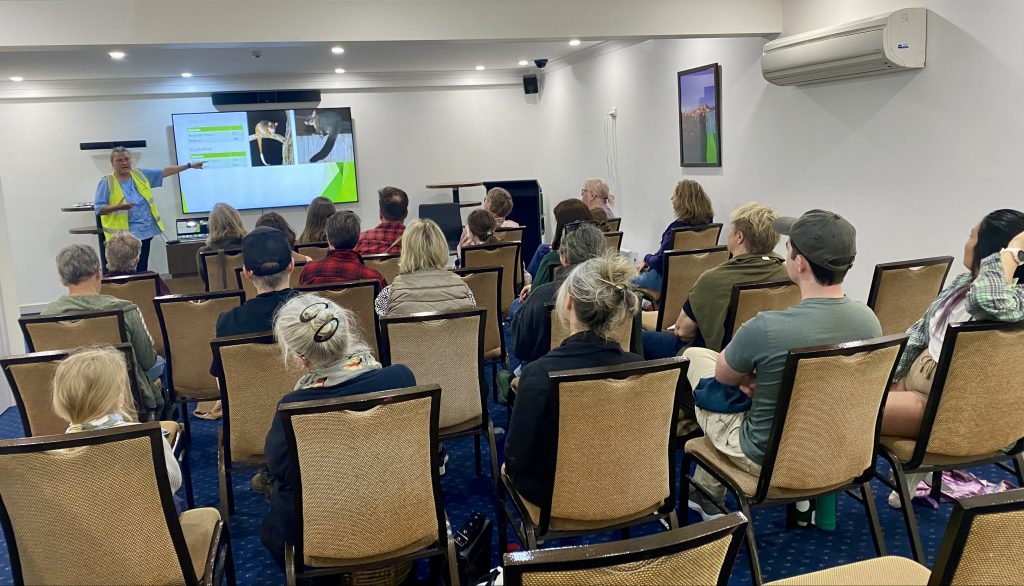
Tracy speaking about possums at the Planetary Health site in Katoomba (Lis Bastian)
Presenter Tracy Burgess should know – she’s been a wildlife volunteer for WIRES (Wildlife Information, Rescue and Education Service) since 2016, conducting around 700 rescues every year.
She’s also the local branch coordinator, leading the emergency management team. Two rooms of her home are dedicated to being a wildlife hospital and nursery and she has an outdoor area for larger animals and birds.
At the workshop Tracy spoke about measures we can take to prevent injuries to wildlife, and what to do if we encounter an injured or sick native animal.
Tracy’s powerpoint presentation in video format: 10 secs per slide (Supplied by Tracy Burgess)
The threat of extinction
Some of our native wildlife are already on the verge of extinction. Take the cute flying fox or ‘puppies with wings’ as Tracy calls them. Sounds cute, but not everyone thinks that way about bats; they’ve often got a bad rap in popular culture.
And yet the flying fox is a crucial pollinator. It’s been called an ‘environmental superstar’! Being responsible for the pollination of many native species, including eucalypts, it ensures the survival of our native forests.
“But sadly, they’re a prominent and potentially disastrous victim of climate change,” says Tracy.
Because these amazing creatures carry absolutely no extra weight in the form of fluid, they’re especially susceptible to hot dry conditions. In just one hot day, 800 of them died in Emu Plains alone and countless others elsewhere.
But heat is not the only threat: they’re often becoming entangled in fruit netting or barbed wire and getting electrocuted on power poles.
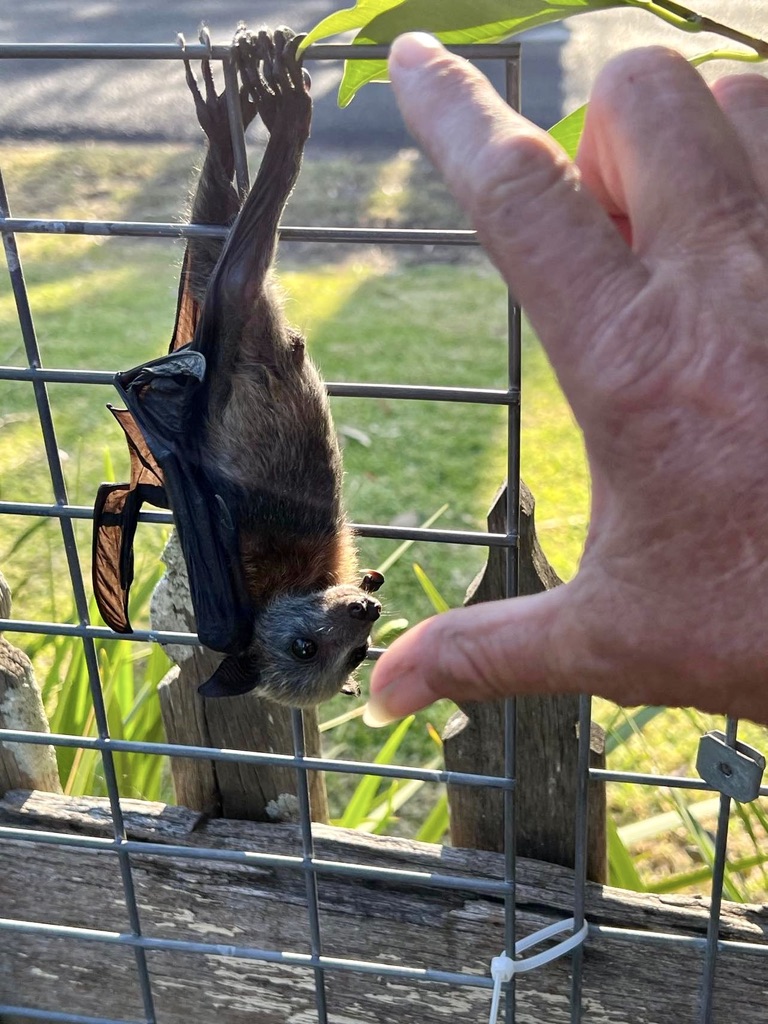
This tiny flying fox pup’s mum was electrocuted (Tracy Burgess)
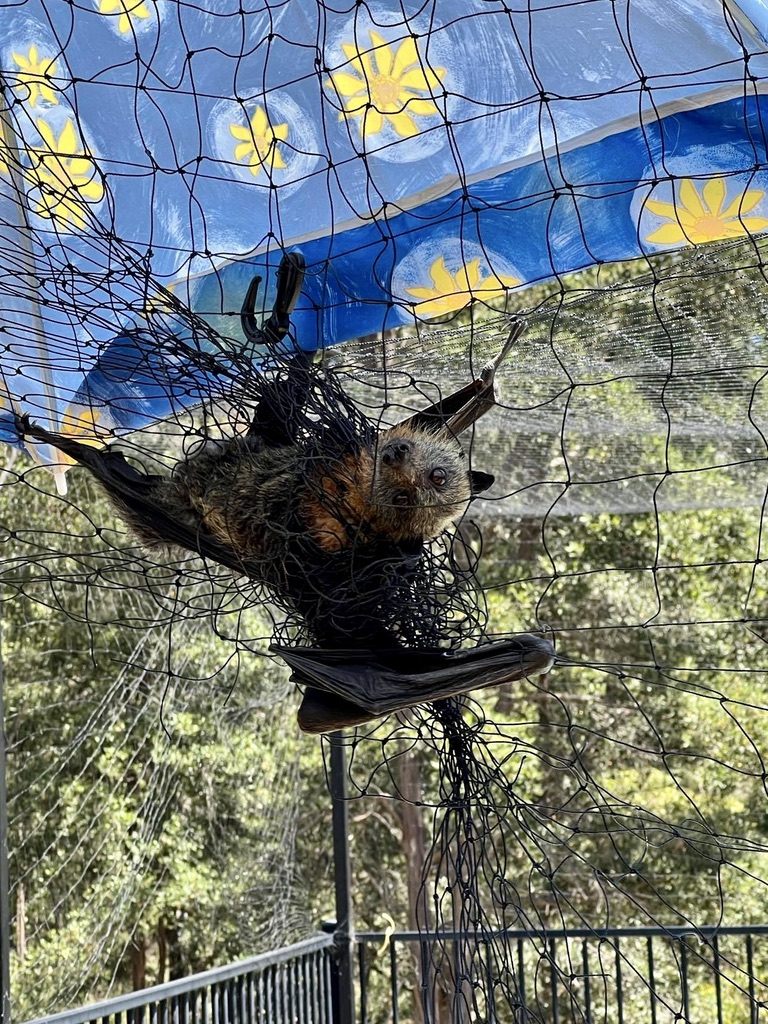
A flying fox caught in fruit netting. (Tracy Burgess)
You can help look after bats and flying foxes by putting out water, getting rid of barbed wire and either avoiding fruit netting or only using fine mesh netting.
The netting with holes can trap animals, including birds and possums, and can cause serious, painful injuries and maiming. “It’s really not worth it,” says Tracy.
And a word of warning, don’t try to pick up a bat or get too close to a bat. Call a certified and vaccinated wildlife carer.
They can carry Australian Bat lyssavirus, so a scratch or bite could lead to infection and the only way to know if you’re at risk is to euthanase the bat before testing it. In other words, any efforts to save the animal will have been in vain.
To avoid getting a bat in your home or building, and it becoming distressed or injured, ensure homes and outbuildings are closed and well-sealed.
Don’t feed the birds
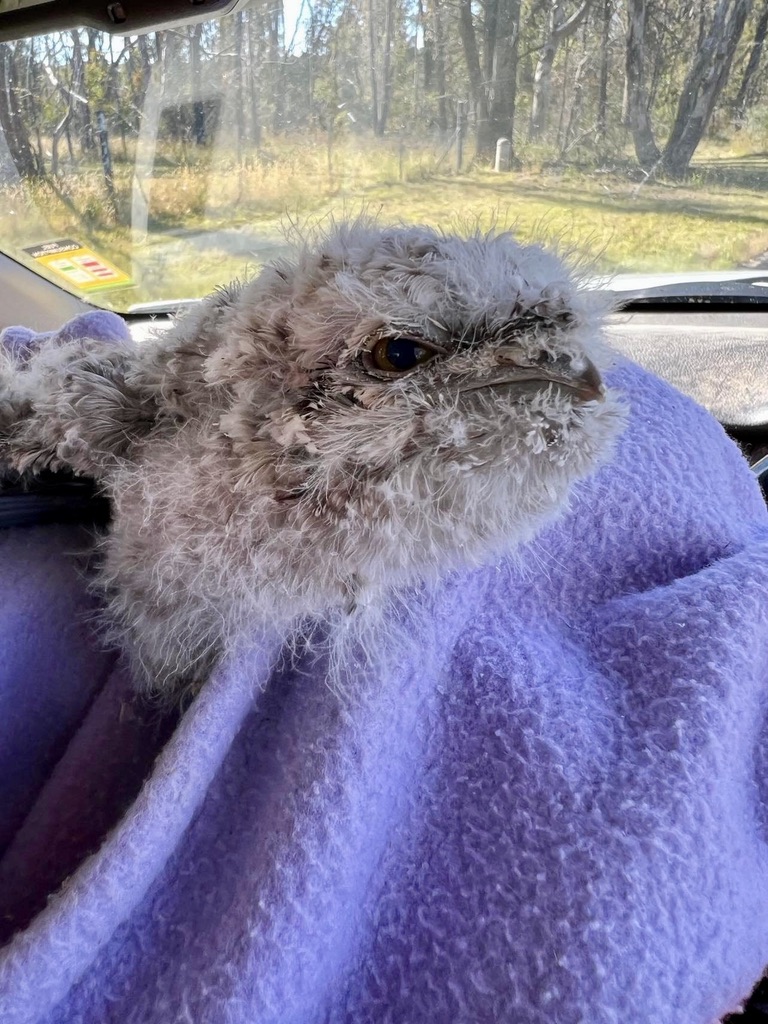
Rescuing a baby Tawny Frogmouth (Tracy Burgess)
Birds are one of the most common native animals to be called in to WIRES and cats are the top cause of their injuries. But more on domestic cats later.
Another cause is beak and feather disease, a highly contagious disease and one of the reasons WIRES advises not feeding birds: it spreads disease.
Tracy strongly warns against feeding birds anyway, especially with commercial bird seed, as it’s detrimental to them, despite being marketed for native birds.
However, providing water to birds is a good thing especially in hot weather. Planting native gardens, including a mix of low shrubs for small birds, provides forage and shelter.
And don’t forget, even much-maligned species, such as sulphur-crested cockatoos, are majestic native animals and they suffer from injuries and disease too: they’re the bird most likely to be called in to WIRES. “Beak and feather disease is a horrendous disease,” Tracy tells us and if you come across a sick bird, call WIRES.
Tracy reminds us that vets usually euthanase a suffering native animal free of charge if necessary but she points out that vets only euthanase animals as a last resort, if an animal can’t be treated and / or pain cannot be managed.
She also warns that if you ever find an injured chick, check if its parents are around and if they are, don’t take it away from them.
“You just stole their child,” she says. “And it’s an old wives’ tale that an animal will reject its young if it’s been touched by a human.”
Possums
Tracy feeding a brushtail possum joey. They need to be fed every four to five hours (including during the night) (Lis Bastian)
“I’ve got a possum in my kitchen” is a familiar refrain for Tracy. Another animal that’s cute to some, a pest to others, possums are high on the call list for WIRES.
There’s confusion between the ringtail and the brushtail, but either way, if they’re out during the day you know something is wrong.
Possums are also susceptible to cat attack or just being in the wrong place. According to Tracy, if you think you have a possum urinating in your roof, it’s probably a non-native rat because possums don’t toilet where they sleep. This would attract predators.
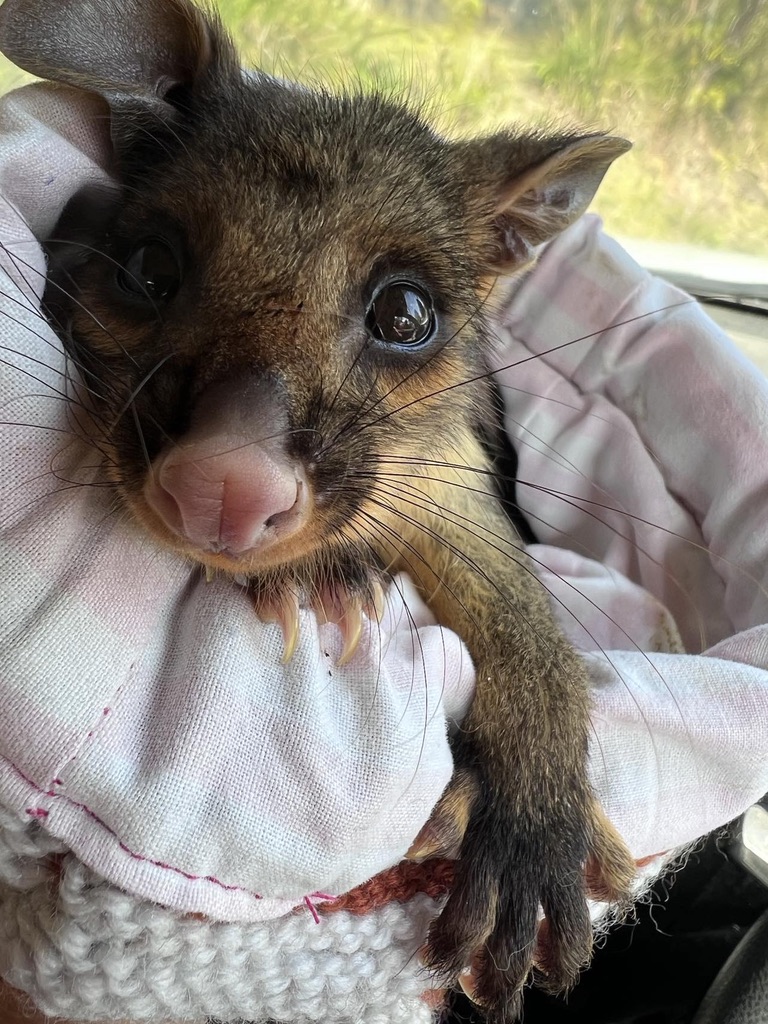
A rescued possum (Tracy Burgess)
Disease is a big problem, particularly for the brushtail, so if you find one with deformities or skin lesions, it may be suffering immensely and it will worsen if not treated early, so alert WIRES.
And if you find a joey possum crying in the bush, it’s probably lost, so try to return it to its parents.
But always take care if approaching a possum and wear disposable gloves if touching it. If you do get bitten, have a tetanus shot if you haven’t had one in the last 10 years.
And note that you cannot move a possum more than 150 metres from your property, according to National Parks and Wildlife guidelines.
Reptiles & Snakes
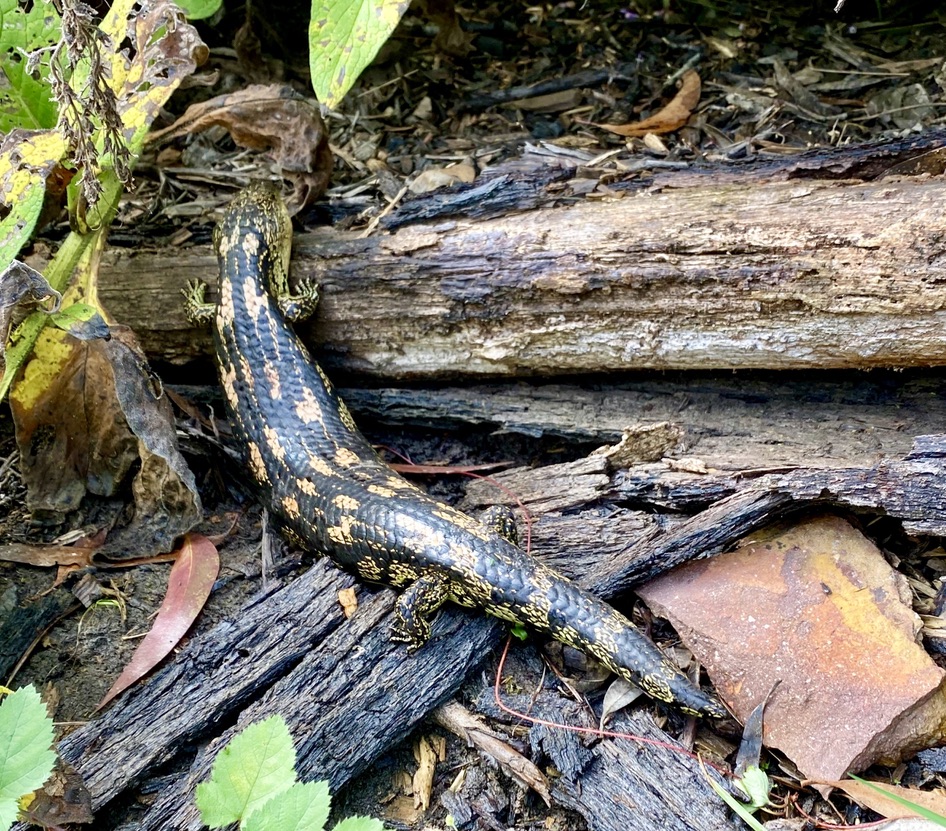
A blue-tongued lizard rescued from a being caught in fruit tree netting. (Lis Bastian)
Among reptiles, WIRES receives the most calls for blue-tongued lizards and snakes, but usually not to save them; more often to have them removed from a property.
Blue-tongues are frequently hit by cars but even more frequently a victim of dog attack, so it’s important to keep dogs on leash and away from reptiles.
Nurture a native garden with water, add sticks for animals to perch on, and provide shade and interest with rocks and hollow logs, where lizards can take a break.
Macropods
Collisions with vehicles are one of the biggest threats to roos and wallabies, but beware: a male kangaroo can weigh around 60 kilos, with tremendous power in its back feet, so never approach an injured adult kangaroo. Call WIRES instead or after hours, local police.
A severely injured roo, even if it looks near-dead, can have a sudden surge of adrenalin and be dangerous.
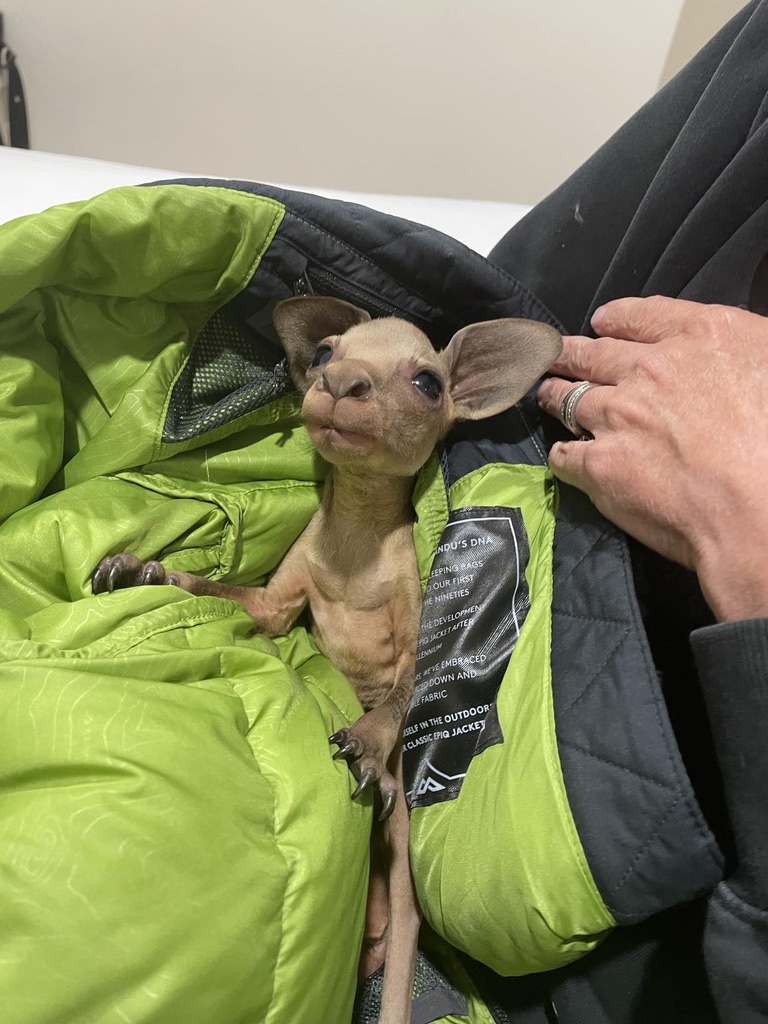
Keeping a joey warm (supplied)
If you find a joey in a dead female roo’s pouch or nearby, it needs to be kept in a warm, dark place while waiting for WIRES or transporting to a vet, as it can’t thermoregulate on its own. But don’t touch a joey if its mother is around.
Another danger for kangaroos are dogs, so keep dogs on a leash, and remember that your dog is in as much danger from the roos.
Rattus rattus or native?
Tracy rescuing a baby antechinus (supplied)
Many small native mammals such as antechinus and bandicoots also get a bad rap. Bandicoots are unpopular because they dig holes.

Rescuing baby bandicoots (Tracy Burgess)
“We live in the Blue Mountains – enjoy the wildlife,” Tracy says. “Learn to live with them, not against them, and think of their good points. How they’re aerating the soil, for instance.”
It’s also worth learning to tell the difference between a native rat and the introduced variety. The tail is the best giveaway – a long, scaly hairless tail points to a non-native rat or mouse.
Native rats and antechinus generally don’t want to be in a house or to eat human food, so put them outside and you can encourage them to stay outside with hollow logs or even nesting boxes.
And remember that death by rat poison is painful and slow for any creature that happens to consume it.

A hopping mouse (Tracy Burgess)
Why did the echidna cross the road?
To get to the female on the other side of the road, of course!
If an echidna is trying to cross the road don’t think you’re doing them a favour putting them to the side they came from: one of the most common reasons in spring a male echidna will try to cross the road is to mate, so it will only try again. “When they smell a female they don’t care if there’s a highway between them,” says Tracy.
Only re-locate an echidna if it is injured or in immediate danger.
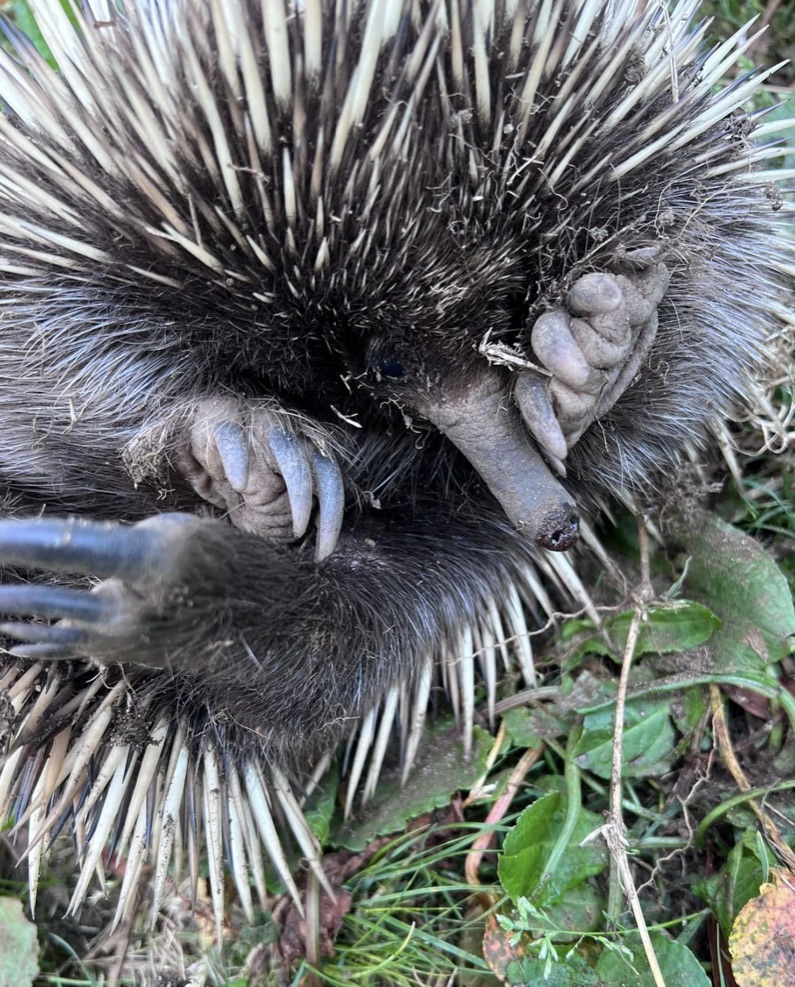
An echidna after being attacked by a Great Dane (Tracy Burgess)
Wombats & Koalas
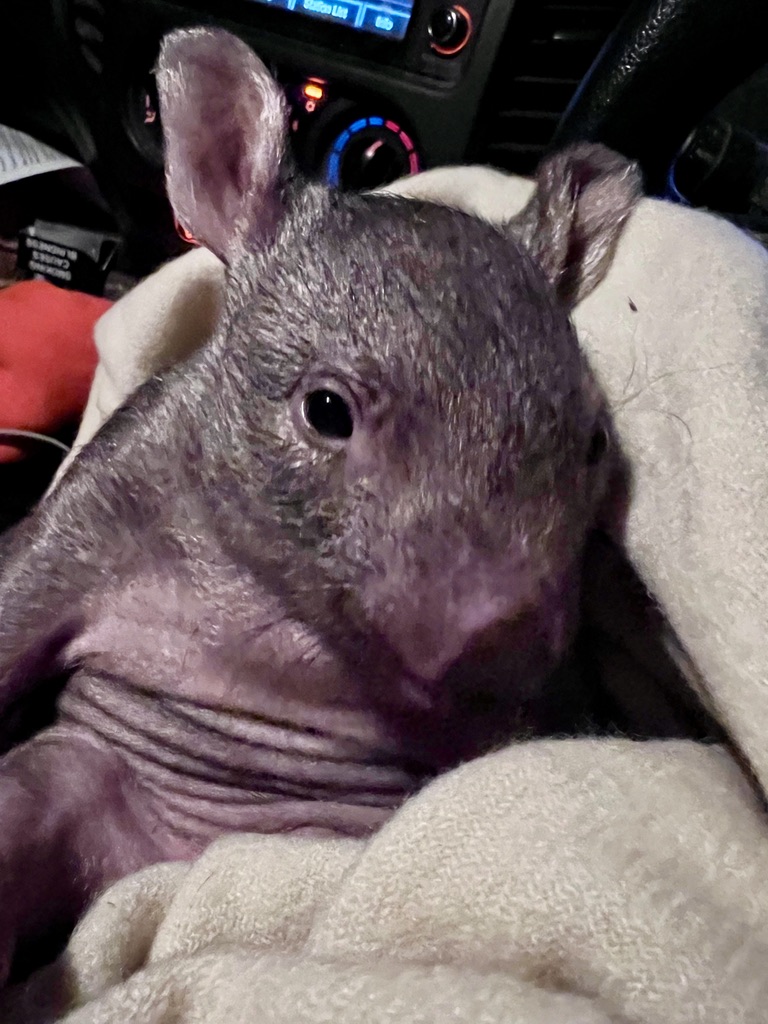
A baby wombat being rescued by Tracy (supplied)
One of the most concerning threats to wombats is mange, an introduced parasite that proves fatal to wombats if left untreated. You can volunteer to help WIRES or other community groups with this issue, as they need to be treated in situ and not moved.
Other major threats are motor vehicles and dog attacks, so always drive carefully, especially at dusk, and keep dogs on a leash.
Because they’re so rare in the Blue Mountains, a koala sighting can understandably attract excitement and attention, but this may not be in the interest of the animal, so remain calm if you find an injured koala and don’t handle it. Call WIRES first but if you must rescue one, use a heavy blanket and make sure it’s facing away from you so its claws can’t make contact.
Let’s talk about cats
Throughout the workshop, Tracy emphasised the damage wreaked by domestic cats on native wildlife, particularly birds and reptiles.
Despite everyone – including cat owners – apparently knowing that cats shouldn’t roam outdoors in Australia, Tracy believes the issue arises from every cat owner thinking it’s not their cat:
“They’ll protest that their cat is too lazy/well-fed/fat to hunt,” she says. “I have two cats, so I’m not anti-cat and recognise it’s not their fault. But it’s their nature to hunt, hungry or not.”
Instead, it’s the responsibility of cat owners to ensure their cats are indoors at all times for the protection of wildlife.
There are Council-led initiatives to help cat owners keep the pets indoors, including cat enclosure subsidies. See more here: bmcc.nsw.gov.au/keeping-cats-safe-at-home-project
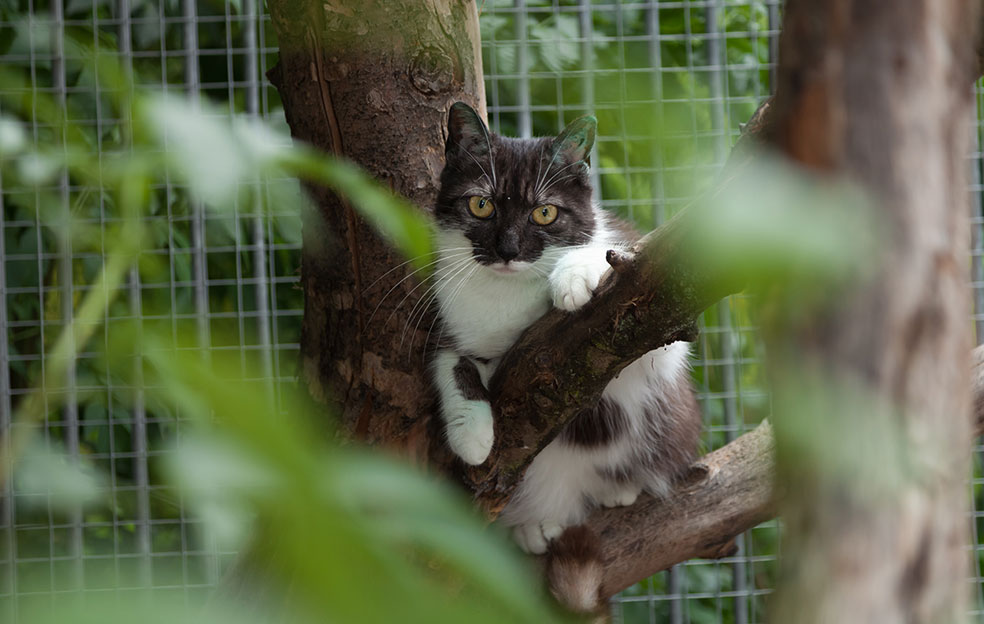
Council is encouraging cat owners to apply for outdoor cat enclosure subsidies (supplied)
It’s also important to remember that cats are at risk if they’re allowed to roam: they’re in danger of being hit by a car, picking up ticks or parasites, or being snapped up by an owl.
It’s critical that we live in harmony with our native wildlife and always take care of both ourselves and the animal whose injury we’re managing.
As Tracy says: “Never think you’re smarter than them. I’ve been fooled so many times!”
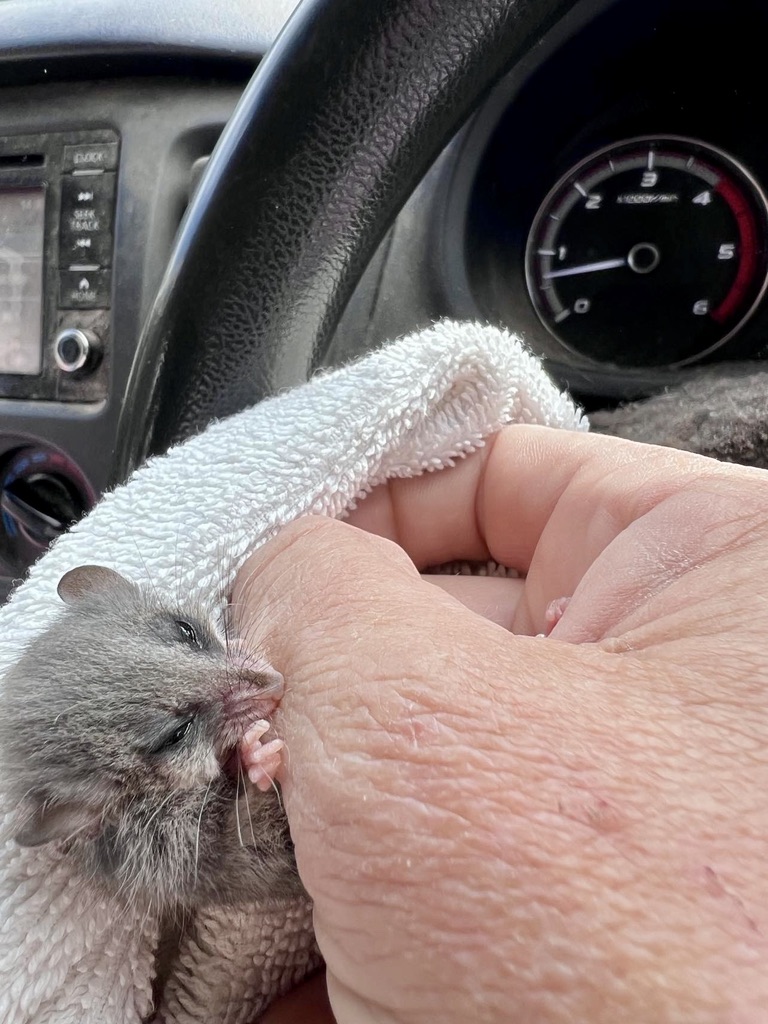
Some of the tiny marsupials Tracy rescues aren’t as cute as they look! (Tracy Burgess)
Tips to protect our native wildlife:
- Always drive carefully and slowly at dusk.
- Remove barbed wire from fencing: it can be deadly to many native animals.
- Only use fine mesh fruit netting: if you can put your finger in the holes, it’s too big.
- Carry a kit in your car: heavy duty towels, blankets, gloves, pillow slips, towels, scissors, a ventilated box with lid or animal cage.
- Know animal behaviours and try to live in harmony with them.
- Provide habitat for our native critters: nesting boxes, gardens with native grasses, hollows, rocks, etc.
- Provide water and shade on hot days and especially during bushfires.
- Never run into a bushfire to save an animal. It probably won’t survive anyway and you’ll be endangering yourself and the rescue personnel who try to rescue you.
- Remember it’s an offence to keep a native animal in captivity! You need a licence from NPWS to keep any native animal.
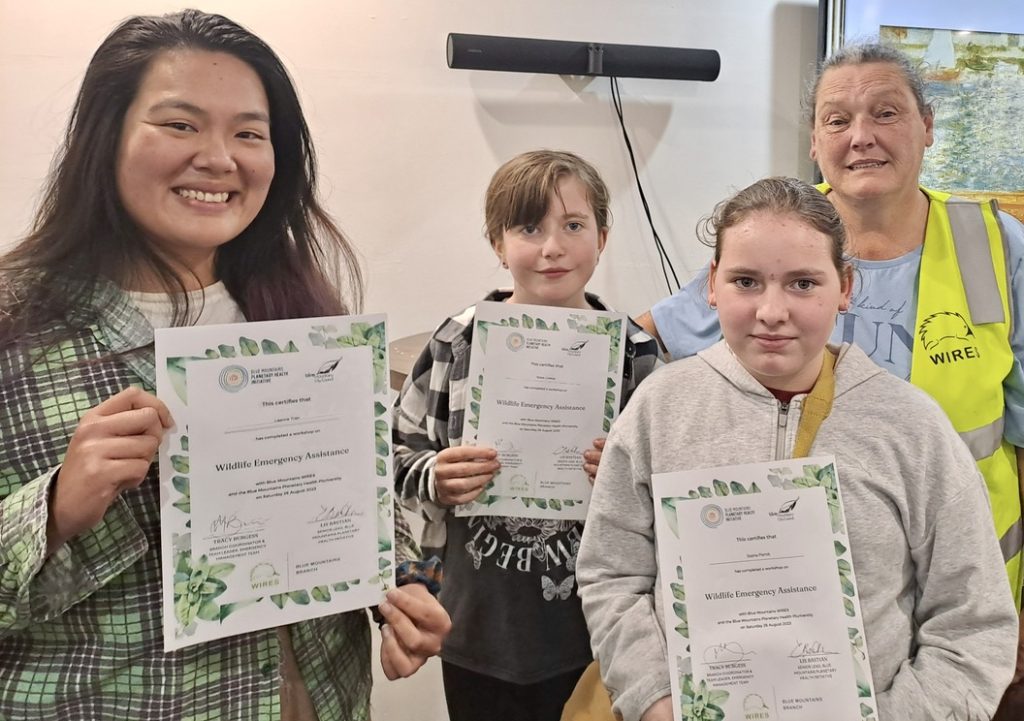
Participants received a certificate for taking part in the Wildlife Emergency Assistance Workshop (Liz Durnan)
Take Action:
- Explore the number of ways you can volunteer with WIRES here
- For more detailed emergency advice see WIRES: https://www.wires.org.au/rescue-emergency-advice
- To report a sick or injured animal call 1300 094 737 or go to: https://www.wires.org.au/report-a-rescue
- To donate to WIRES: https://www.wires.org.au/report-a-rescue?form=donate
Share this article:
This workshop and story are part of a Bioregional Collaboration for Planetary Health and have been supported by the Disaster Risk Reduction Fund (DRRF). The DRRF is jointly funded by the Australian and New South Wales governments.
